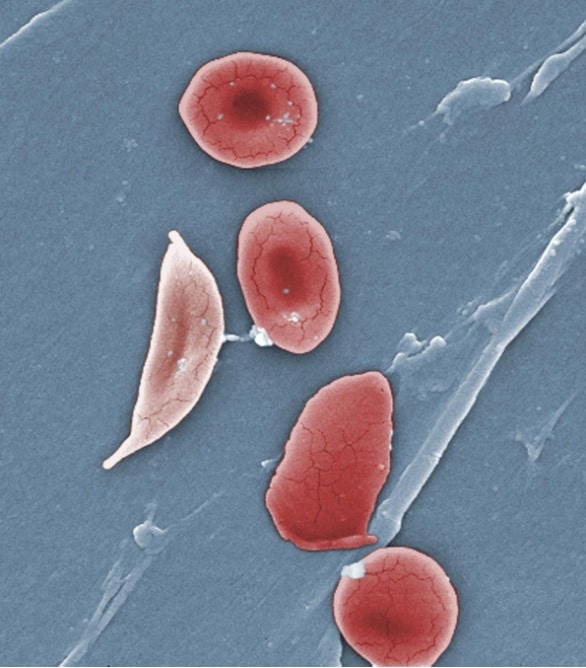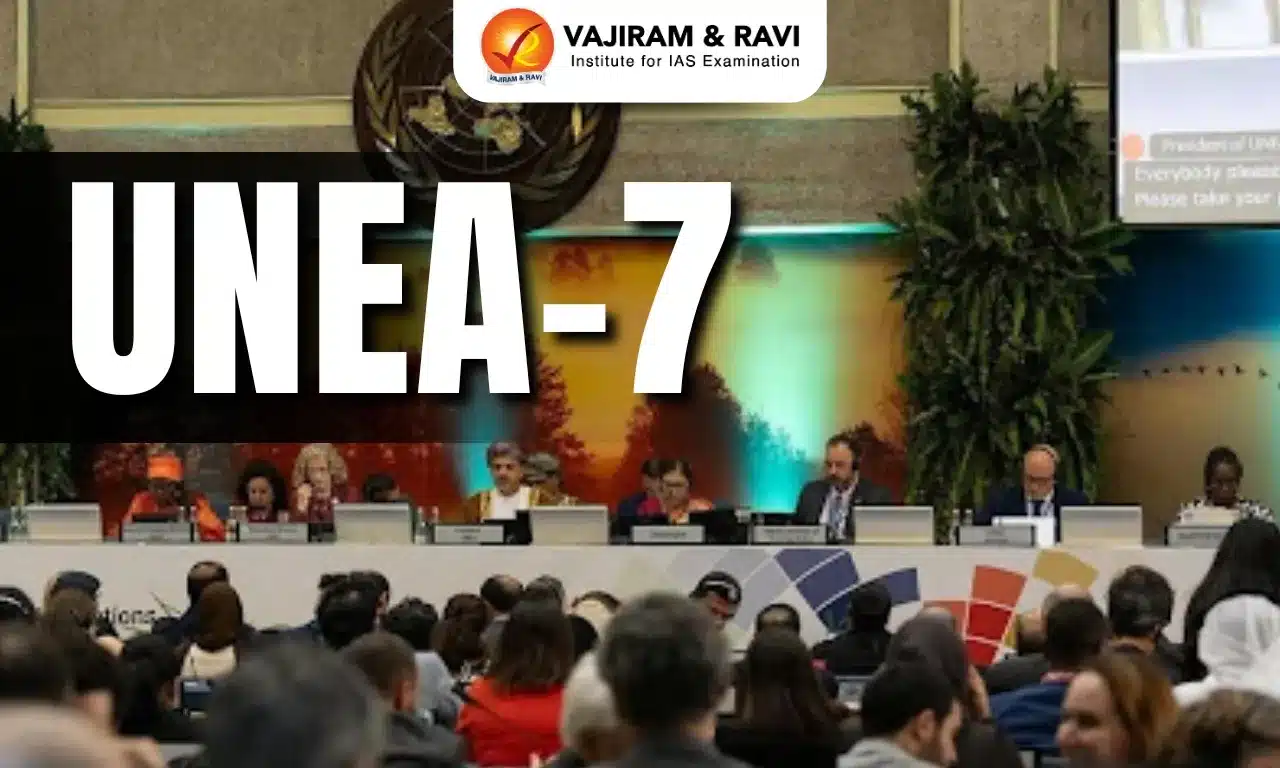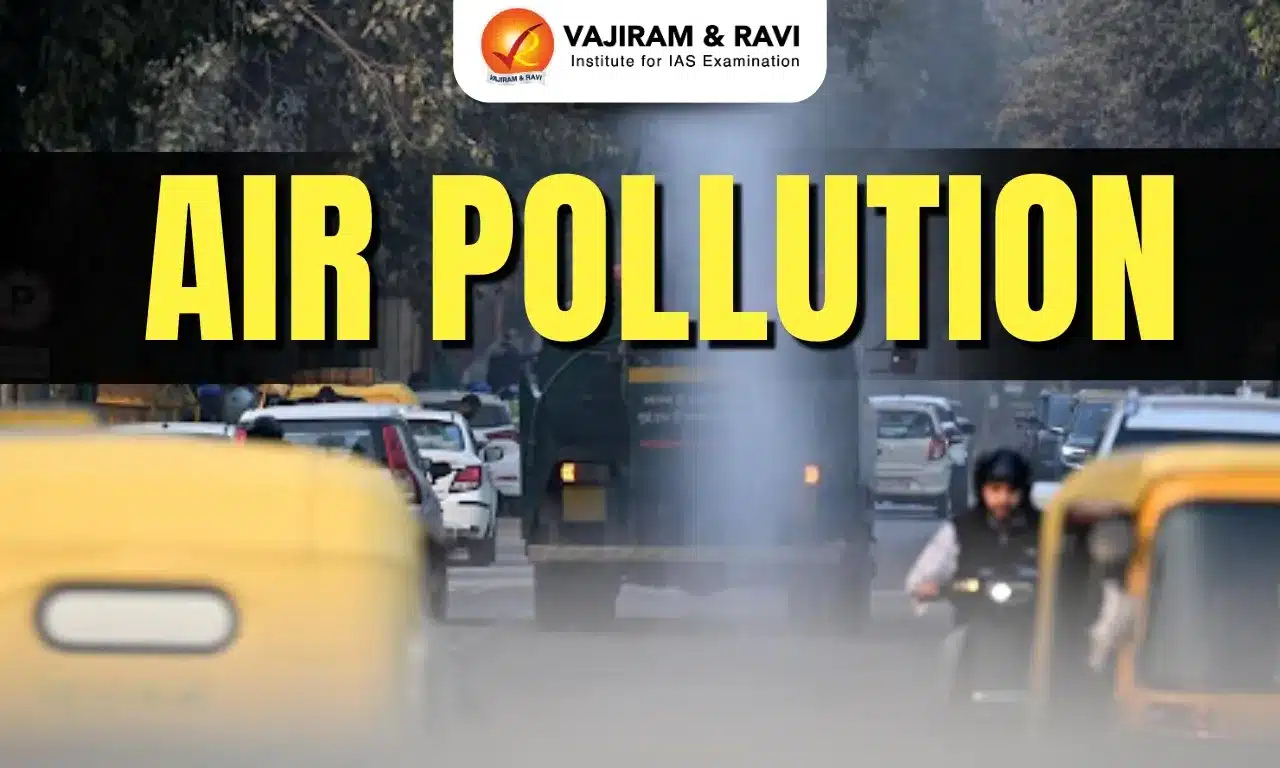What’s in today’s article?
- Why in news?
- What is Sickle Cell Anaemia (SCA)?
- What happens in SCA?
- Can SCA be treated?
- SCA in India
- What has India done so far?
Why in news?
- Sickle cell anaemia (SCA), a genetic blood disorder, found mention in the Budget this year.
- Finance Minister Nirmala Sitharaman said that the government will work in “mission mode” to eliminate the condition by 2047.
What is Sickle Cell Anaemia (SCA)?
- First discovered by a physician named James Herrick, Sickle cell anemia is one of a group of inherited disorders known as sickle cell disease (SCD).
- It affects the shape of red blood cells, which carry oxygen to all parts of the body.
- Red blood cells contain hemoglobin, a protein that carries oxygen. Healthy red blood cells are round, and they move through small blood vessels to carry oxygen to all parts of the body.
- In someone who has SCD, the hemoglobin is abnormal, which causes the red blood cells to become hard and sticky and look like a C-shaped farm tool called a sickle.
What happens in SCA?
- A round red blood cell can move easily through blood vessels because of its shape but sickle red blood cells end up slowing and even blocking, the blood flow.
- Moreover, sickle cells die early, resulting in a shortage of red blood cells that deprive the body of oxygen.
- These obstructions and shortages may cause chronic anaemia, pain, fatigue, acute chest syndrome, stroke, and a host of other serious health complications.
Can SCA be treated?
- Sickle cell anaemia is a genetic disorder, making complete elimination a challenge that requires a major scientific breakthrough.
- The only cure comes in the form of gene therapy and stem cell transplants — both costly and still in developmental stages.
- In gene therapy, the DNA inside the haemoglobin gene is edited to stop the disease.
- In stem cell transplants, the bone marrow affected by sickle cell anaemia is replaced with healthy bone marrow from a donor.
- Blood transfusion, wherein red blood cells are removed from donated blood and given to a patient, is also a trusted treatment in the absence of permanent cures.
- But challenges include a scarcity of donors, fears around safe supply of blood, risk of infection etc.
SCA in India
- India is the second-worst affected country in terms of predicted births with SCA — i.e., chances of being born with the condition.
- In India, around 18 million people have sickle cell traits and 1.4 million patients have sickle cell disease.
- Sickle Cell Disease (SCD) is widespread among the tribal population in India where about 1 in 86 births among STs have SCD.
- A few states in India have a significantly higher SCD prevalence. These include:
- Chhattisgarh, West Bengal, Uttar Pradesh, Maharashtra, Madhya Pradesh, Jharkhand, Gujarat, Odisha, Kerala and Rajasthan.
- Collectively, these states are referred to as the sickle cell belt.
What has India done so far?
- The Indian Council of Medical Research and the National Rural Health Mission in different States are undertaking outreach programmes for better management and control of the disease.
- The Ministry of Tribal Affairs (MoTA) has launched the Sickle Cell Disease Support Corner to bridge the gap between patients and health care services in tribal areas.
- The Portal provides a web-based patient powered registration system which will collate all information related to SCD among tribal people in India.
- This includes providing them a platform to register themselves if they have the disease or the trait.
- The National Council on Sickle Cell Disease has also been constituted for timely and effective action.
- The National Health Mission guideline on Hemoglobinopathies also identifies establishing services at the community level for pre-marital and pre-conception screening backed by genetic counselling services as a strategy for addressing SCA.
- In the Budget 2023-24, the government announced its plans to distribute “special cards” across tribal areas to people below the age of 40.
- The cards will be divided into different categories based on the screening results. The mission will receive funding under the National Health Mission.
Q1) What is Hemoglobin?
Hemoglobin contains iron, which allows it to pick up oxygen from the air we breathe and deliver it everywhere in the body. You can think of hemoglobin as the iron (“heme”), oxygen transport protein, (“globin”) found in red blood cells.
Q2) What is the role of Sickle Cell Disease Support Corner?
The Ministry of Tribal Affairs (MoTA) has launched the Sickle Cell Disease Support Corner to bridge the gap between patients and health care services in tribal areas.The portal will give access to real time data to every visitor through a dashboard, online self-registration facility, and will act as a knowledge repository with information about the disease and various government initiatives.
Source:Explained | How is India addressing sickle cell anaemia? | Ministry of Tribal Affairs | Indian Express
Last updated on December, 2025
→ Check out the latest UPSC Syllabus 2026 here.
→ Join Vajiram & Ravi’s Interview Guidance Programme for expert help to crack your final UPSC stage.
→ UPSC Mains Result 2025 is now out.
→ UPSC Notification 2026 is scheduled to be released on January 14, 2026.
→ UPSC Calendar 2026 is released on 15th May, 2025.
→ The UPSC Vacancy 2025 were released 1129, out of which 979 were for UPSC CSE and remaining 150 are for UPSC IFoS.
→ UPSC Prelims 2026 will be conducted on 24th May, 2026 & UPSC Mains 2026 will be conducted on 21st August 2026.
→ The UPSC Selection Process is of 3 stages-Prelims, Mains and Interview.
→ UPSC Result 2024 is released with latest UPSC Marksheet 2024. Check Now!
→ UPSC Prelims Result 2025 is out now for the CSE held on 25 May 2025.
→ UPSC Toppers List 2024 is released now. Shakti Dubey is UPSC AIR 1 2024 Topper.
→ UPSC Prelims Question Paper 2025 and Unofficial Prelims Answer Key 2025 are available now.
→ UPSC Mains Question Paper 2025 is out for Essay, GS 1, 2, 3 & GS 4.
→ UPSC Mains Indian Language Question Paper 2025 is now out.
→ UPSC Mains Optional Question Paper 2025 is now out.
→ Also check Best IAS Coaching in Delhi

















